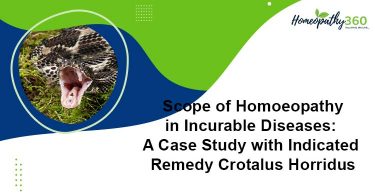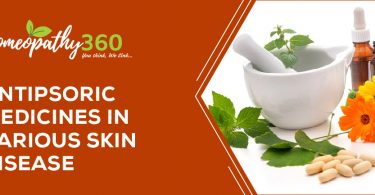Gout is a disorder of purine metabolism manifested by
1. Increased serum uric acid concentration
2. Recurrent attack of characteristic type of acute arthritis in which crystals of monosodium urate mono hydrate may be demonstrable in the leucocytes present in the synovial fluid.
3. Aggravated deposits of monosodium urate mono hydrate in and around the joints of the extremities.
4. Renal disease involving intestitial tissues and blood vessels.
5. Uric acid nephrolithiasis
Gout usually begins in the 3rd decade of life and affects in men than in women. A family history is present in a fairly large proportion of cases indicating role of inheritance in hyperuricemia.
Clinically the natural history of gout comprises of
1. asymptomatic hyperuricemia, a/c gouty arthritis and chronic tophaceous stage
There are two types
1. hyperuricemia of metabolic origin- primary gout occurs due to underlying biochemical defect causing hyperuricemia is not known, while secondary due to G6PD
2. hyperuricemia of renal origin
Pathological changes:
1. Acute gouty arthritis
precipitation of sufficient amount of needle shaped crystals of monosodium urate from serum or synovial fluid . There is joint effusion containing numerous polymorphs macrophages and microcrystals of urates.
initially there will be intense pain along with fever.
2. Chronic tophaceous arthritis
Recurrency of acute gouty arthritis lead to progressive evolution in to chronic arthritis. The deposit of urate encrust the articular cartilage. There is synovial and articular progrssive destruction of articular cartilage and subchondral bone.
3. Tophi and soft tissue:
A tophus is a mass of urates measuring a few millimeters to a few ccentimeters in diameter. Tophi may be located in the periarticular tissue as well as subcutaneous such as one hand and feet.
4. Renal leision:
chronic gouty arthritis frequently involves kidneys, three types of renal leisions are describes in kidneys- acute urate nephropathy, chronic urate nephropathy, and uric acid nephro lithiasis.
PSEUDO GOUT:
Pseudo gout refers to an inflammatory joint involvement due to deposites of calcium pyrophsphate in the joint space. The condition seen in the middle aged and elderly individuals. the pathogenesis is unclear.
CAUSES:
Primary causes:
Idiopathic
Decreased renal clearance
Secondary causes;
Psoriasis
Drug induced
Chronic haemolytic anaemia
Intrinsic kidney disease
Risk factors for high uric acid in blood include:
Diuretic medication
Alcoholism
Hormonal disorders, like hypothyroidism, menopause etc.
Obesity
Increase in take of purine rich food
Renal insufficiency
Other medical conditions like hypertension, diabetes mellitus, dyslipidemia and
atherosclerosis etc
Hereditary
General management:
Dietary: the use of low – purine diet is significantly get down serum uric acid level.
The diet principally consist sugars, starches and fat, with protein supplied by eggs and
cheeses. The following food should be avoided:
Red meat
Poultry
Sea foods such as sardine, mussels etc.
Alcohol
Beans
Organ meat
Oat meal, mush room, peas
Yeast supplements
Activity: no limitation existing on activity for patients with hyperuricemia, although
strenuous exercise may raise serum uric acid level
Investigation:
Serum uric acid: 3.4- 7.0 mg/dl (in males)
2.4-6.5mg/dl (in females)
HOMOEOPATHIC THERAPEUTICS:
BENZOIC ACID
A gouty rheumatic diathesis engrafted on a gonorrhoeal or syphilitic patient
Extremities- pain, it produces and cures symptoms of uric acid diathesis, rheumatism
and gouty deposits in the wrist joint. Gouty concretions, arthritis vaga, affects on all
joints, especially knee joint. Pain tearing, stitching, in large joints of big toe, redness
and swelling of joints < night.
Urinary system- highly coloured and very offensive, and gouty symptoms. Renal
insufficiency. Pain sudden changes their locality. With urine the urine and stool has
very offensive strongly ruinous pungent odour, usually dark urine, but light urine may
alternate with the heavy urine, is anxious and shudders on seeing deformity. Bed
wetting with the characteristic urine. Cystitis, bed wetting, nephritic colic, one takes
cold, from the urine becomes scanty.
BERBERIS VULGARIS
Especially suited to elderly gouty people who are pale, sickly and chilly, with twinges
in the finger joints, where deposits are usually painful., numbness and stiffness,
lameness with painful pressure in renal and lumbar regions.
Hepatic and Urinary system- Colic: gall stones, sudden pain in the liver; like a knife
stabbing, jaundice, pain worse with pressure, distress belching, and indigestion,
salivation, vomits food after eating. Urine yellow, turbid and flocculent
Locomotor system- Gouty concretions in the auricles that become very painful with
pains that tears and sting. Lumbago pains to around the body and down the legs.
Urine red, and mucus sediment. Has pain that burn, stitch especially tear worse with deep pressure, extend down the back and into the pelvis along the course of the
uterus, wander from joints to joints, back feels stiff and numb.
BRYONIA ALBA
Has complaints that comes on slowly, aversion to and a decided aggravation from the
least motion, the pains are sharp lacerating and stitching , one is worse cold, on touch
and mental exertion, better lying on affected side, cold, cold air, cold application and
heat, except teeth. Acute inflammatory rheumatism with all it symptoms.
Extremities: knees stiff and painful, joints red, swollen, hot, with stitches and tearing,
worse on least motion. Painful stiffness in the nape of neck. Stitches and stiffness of
lumbar region. From sudden change of weather. Pain in joints and limbs better by
warmth. Hot swelling of feet, ankle or knee injury, swollen painful and worse
motion.
Urinary system- urine red, brown, like beer, hot and scanty.
COLCHICUM AUTUMALE
Adapted to rheumatic gouty diathesis; persons of robust vigorous constitution;
diseases of old people., has a tendency to extreme prostration, collapse and internal
coldness, Stomach- smell is so sensitive that the odour of cooking especially of fish,
egg, fat meat and broth nauseate one to the point of faintness.
Extremities- The pains of rheumatism move from one joint to another and are
especially worse motion and are better by cold even though one is cold, worse cold
damp weather and the cold damp rains of fall as well as debilitating heat of summer.
The lower limbs often grow so weak the knees knock together. Big toe inflamed,
sharp sticking pains worse touch, fears approach.
Urinary system- , the urine is often inky black and contains albumen
According to Stille, this pulse is slightly irritated, the affected part exceedingly
painful; the skin looks rose coloured, and a white spot remain after pressure by the
finger.
Allopathic authority says, colchicum is suitable only in persons of vigorous
constitution, and in whom the manifestations of the disease are acute and active, or
only approaching the, sub acute and caution against the asthenic form.
KALI CARBONICUM
Kali group have an affinity to solid tissues and blood corpuscles. The fibrous tissues
and ligaments of the joints. Backache, weakness and perspiration are the
characteristics of the drug.
Urinary system: Burning pain in left kidney, pressure in bladder long before urination,
the more it is pressed less the urine flows. Urine foamy with thick red sediments.
Extremities: Arthritis, deformative arthritis, worse in small joints, nightly rheumatic
pains. Sharp , aching pain in the joints and tendons. Spasmodic contraction of fingers
and toes. Knees painful, worse going upstairs or down stairs.
LEDUM PALUSTRE
Adapted to rheumatic gouty diathesis, constitutions abused by alcohol.
Extremities – Rheumatism or gout begins in the lower limbs and ascends, especially if
brought to low asthenic condition by abuse of colchicum. Joint become the seat of
nodosities and gout stones, which are painful, acute and chronic arthritis. Affects left
shoulder and right hip joint. . . Pressure and lame rheumatic pain in right hip joint
< motion. Rheumatism alternating with haemoptysis. Sprained feeling in all positions
but < by walking. Cracking and creaking of knees. Acute traumatic synovitis with
much effusion and coldness of parts.
. when the violent tensive or tearing pain in
one of the small toe or finger joints, is accompanied with circumscribes redness and
little swelling, general coldness, great depression of spirits and a sediment of uric acid
in the urine. Pressure above the left inner ankle < movement, left foot. Obstinate
swelling of the feet. The soles of the feet are painful when walking as if they were
filled with blood. Heat in the hands and feet, in the evening, long continued warm
sweat on the hands and feet, numbness and gone-to- sleep feeling of the limbs.
LYCOPODIUM CLAVATUM
Is nervous , emotional sensitive , inclined to emaciate especially about the neck, the symptoms begin on the right side and either they stay there or travel to the left side and are predominantly worse from 4pm- 8pm. Stomach disorders from oysters , onion and hot biscuits. Urination frequent at night, normal during the day: gravel or red sand in children, child screams just as the urine is about to pass.
Extremities- numbness. Drawing, tearing in limbs especially at rest or at night.
Tearing in shoulder and elbow joints, Chronic gout. Finger joints much distorted and filled with chalk deposits. Pain in the heels on treading, as if from a pebble. Hands
and feet numb. Cracking of joints when stretched.
Urinary system – stiffness in the renal region especially right side. Periodical
discharge of gravel and small calculi. Pain in left kidney and ureter.turbid milky urine with offensive purulent sediment, dull pressing pain in the region of bladder and abdomen. Produces lithic acid deposit in quantities; hence pains in the kidneys and bladder.
SEPIA OFICINALIS
Urinary system- Urine turbid with sediment of red sand, blood red with white
sediment and cuticle on the surface. Very offensive, with much white sediment.
Chronic cystits, slow micturition with bearing down sensation above the pubis.
Extremities- Great faintness with heat, the coldness in extremities, stiffness and cracking of the joints with arthritic pains . Stiffness of the elbow joint, cold
perspiration of the hands, crampy pain in the right hip joint after sitting for a short time.
PULSATILLA
Varices on the lower limbs. Red hot swelling in the feet, extending up to the calf, with stinging pain. Swelling of the top of the foot. Sensation of soreness in the soles of the feet. Tension in the inner parts or in the joints.The joints chiefly affected are the knees, the ankles, and the small joint of the hands, and (most especially) the feet. The rheumatico- gouty action thus displayed is also manifested in pains of divers kinds in the nape of neck and extremities. According to Dr. R. Hughes; The disorder of digestion which lies at the foundation of gout is just that to which Pulsatilla corresponds. In the paroxysm itself it is generally superseded by Colchicum.
The swelling and het of knee and ankle joint as well a the small joint s of the fingers and toes, together with the drawing and tensive pain in them. Simple pain in the limbs and joints, obliging him to stretch the body, with heat of the whole body, thirst in the morning in the bed.
TEREBINTHINA
Urinary system- the most important sphere of action of Terebinthina lies in the region of the kidneys and in the urinary mucous membrane generally. Burning drawing pain in the kidneys, with bloody urine. Great burning in the right hypochondrium, biliary calculi. Drawing in right kidney extending to right hip. Stangury with haematuria.
Scanty, suppressed, odour of violets. Nephritis following any acute disease.
Extremities- Acute pain in all joints.. Fingers insensible and asleep in the evening.
Heaviness and partial loss of use of right arm and left leg. Sprained pain in the muscles of left arm. Limped with left foot and dragged the leg in walking, ankle was stiff.
URTICA URENS
Extremities- Rheumatism of the arm, when the deltoid muscle is affected. Dr Burnett used Urtica urens in acute gout with fever, used it in five drops doses of mother tincture in a glass of warm water every two or three hours, Uric acid diathesis.
Pain in right deltoid, cramp like pain < in evening, (pm, stiff soreness on inside of left
knee- rheumatic pain in both ankle. Symptoms returned at the same time every tear.
Rheumatic stiffness and pain in right wrist, later rheumatic pain in left arm, writ and fingers.- raised , red , itching blisters on the skin of hands and fingers (Nodous joints
of fingers-R.T.C.





